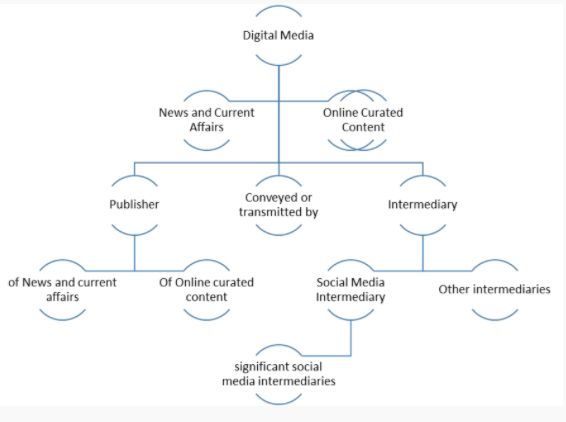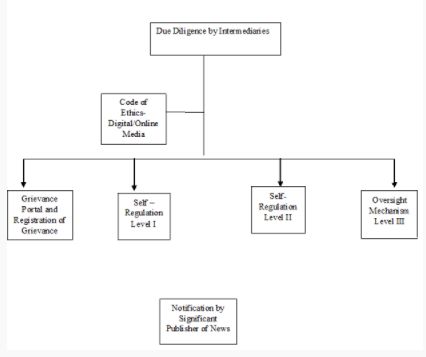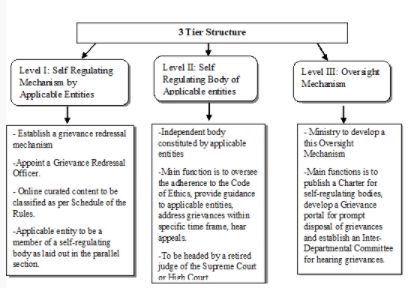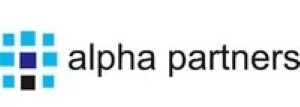After a long tussle between the industry, judiciary and the Government over how to regulate intermediaries and its different forms, digital media et al., the Central Government has notified the Information Technology (Guidelines For Intermediaries And Digital Media Ethics Code) Rules, 2021 ("Rules") using the authority given to the Central Government under Section 79 and 87 of the Information Technology Act, 2000 ("Act"). Under Section 87 of the Act, the Central Government has the power to make rules to carry out the provisions of the Act. Section 79 of the Act puts an obligation on the intermediaries1 to follow due diligence measures and such other guidelines during the performance of their duties, as maybe prescribed by the Central Government. These Rules supersede the Information Technology (Intermediary Guidelines) Rules, 2011, which were applicable to intermediaries only. The new Rules have, inter alia considerably expanded the scope of regulation on intermediaries and also brought Over-The-Top ("OTT") platforms and online news content within its purview.
The Rules have been implemented in order to balance the need for self-regulation of online content as well as to ensure the artistic and creative freedom to the creators of online content.
The Rules are intended to apply to the following subjects:

The Rules also aim to put in place an elaborate mechanism for redressal of people's grievances and complaints. With the present mechanism being implemented, there will be a much simpler way to address the concerns of the general public regarding the online content being presented without any control. These Rules provide elaborate mechanisms for self-regulation of social media intermediaries as well as OTT platforms and also protect the freedom of speech and expression, by providing enough safeguards to intermediaries.
The Rules are structured as follows:

This note provides a brief background of the obligations imposed upon the intermediaries in relation to the content2 provided on digital media3. For better understanding, this note is bifurcated into three parts:
- Part I deals with the obligations of all kinds of intermediaries;
- Part II deals with the obligations of:
- Publishers of news and current affairs content4;
- Publishers of online curated content5;
- Only such Intermediaries which primarily enable the transmission of news and current affairs content; and
- Only such Intermediaries primarily enable the transmission of online curated content
Collectively, the "Applicable Entities".
- Part III deals with Authorities under the Rules.
PART I - OBLIGATIONS OF INTERMEDIARIES
Intermediaries have been classified into two types:
- Social media intermediary: Social media
intermediary means an intermediary which primarily or solely
enables online interaction between two or more users and allows
them to create, upload, share, disseminate, modify or access
information using its services but shall not include an
intermediary which primarily, -
- enables commercial or business oriented transactions; or
- provides access to internet or computer networks; or
- is in the nature of a search-engine, on-line encyclopaedia, online directory or suggestion tool, e-mail service or online storage service.
A social media intermediary is further defined to include a significant social media intermediary if such social media intermediary has users above such threshold as may be notified by the Central Government. Recently the Union Ministry of Electronics and Information Technology has notified this threshold as 50 lakhs (Fifty lakhs) registered users6.
- Other Intermediaries: Intermediaries other than social media intermediaries can be all categorised into other intermediaries.
Section 79 of the Act exempts intermediaries from any liability for any third-party information, data, or communication link made available or hosted. In order to be eligible for exemption, the intermediaries have to abide by the due diligence mechanisms prescribed by the Central Government. These Rules expand the scope of due diligence measure to be taken by all intermediaries, including social media intermediaries. The measures are summarized as follows:
- The rules, regulations, privacy policy of the intermediary shall include guidelines for the users, for instance to not upload, publish or share any information which is patently false, which threatens the security of India, violates any law in force, is defamatory or invasive to women's safety or infringes any intellectual property.
- The intermediary has to inform its users at least on an annual basis (a) of any change in the privacy policy terms or rules or regulation of such intermediary; and (b) in case of any non-compliance with the privacy policy, it has the right to terminate the access of the users.
- The intermediary shall not publish any information which is against the interests and security of state upon receiving actual knowledge from a court as an order or a notification from the appropriate Government.
- The intermediary shall take all reasonable steps to secure its system, computer resources and information contained therein following the reasonable security practices and procedures.
- The intermediary may develop, produce, distribute or employ technological means only for the purpose of securing the computer resources and information contained. The means should not have the potential to change the normal course of operation of computer resource.
- A Grievance Officer shall be appointed by the intermediary for overseeing the complaints made by victims and his/ her details shall be published on the intermediary's website or application.
- The intermediary shall take all reasonable measures to take down access of content which is non-consensual and sexual in nature on receipt of complaint within 24 (twenty-four) hours. The intermediary shall also implement a mechanism for the receipt of complaints for such explicit content.
- The intermediary shall publish a clear and concise statement that they shall adhere to the Code of Ethics provided under the Rules.
In addition to the above, there are certain additional due diligence measures which are to be observed by the significant social media intermediary within 3 (three) months from date of publication of the Rules. The additional measures are summarized as follows:
- Appoint a Chief Compliance Officer, nodal person of contact for 24*7 coordination with law enforcement agencies and a Resident Grievance Officer for overseeing the complaint and ensuring compliances with the Act.
- Publish compliance report every 6 (six) months providing details of complaints received, actions taken and the number of links removed/ disabled.
- Enable the identification of the first originator of information on its computer resource as may be required by order of court or competent authority under Section 69 of the Act.
- Make information clearly identifiable to its users as being advertised, marketed, sponsored, owned, or exclusively controlled, as the case may be.
- Employ measures to identify information that depicts rape or child sexual abuse in any form. The measures taken by the significant social media intermediary in this regard shall ensure the freedom of speech and expression and privacy of such users of the intermediary.
- Have an appropriate mechanism for receipt and tracking of complaints.
- The users of significant social media intermediary shall have the choice to voluntarily verify their accounts by using appropriate measures and such user shall be provided with a visible mark of verification, which shall be visible to all users of the intermediary.
- Appropriate safeguards are provided to the originator of information if any information is removed or disabled by the significant social media intermediary ensuring that no arbitrary action is taken by the significant social media intermediary and the principles of natural justice are followed.
PART II - OBLIGATIONS OF APPLICABLE ENTITIES
Part III of the Rules relate to Code of Ethics and safeguards in relation to digital/ online media. The Rules under Part III are applicable to all Applicable Entities which operate in India or conduct systematic business activity7 of making its content available in India, meaning thereby, that such Applicable Entity has a physical presence in the territory of India.
Further if an Intermediary has a dedicated interface for transmission of news and current affairs content or online curated content, then the Rules shall apply to the content on the dedicated interface.
The Applicable Entities shall observe and adhere to the Code of Ethics, and for ensuring the same and addressing the grievances, a 3 (three) tier structure shall be established. The structure is summarized as follows:

In addition to the above mechanism, a Grievance Portal will be set up by the Ministry of Information and Broadcast ("MIB") as the central repository for receiving and processing all grievances from the public in respect of the Code of Ethics, within 3 (three) months of the commencement of the Rules. Any person having a grievance regarding content published by an Applicable Entities which violates the Code of Ethics, may register its grievance on the Grievance Portal.
Other than the Code of Ethics, an additional requirement is mandated to the Significant Publishers of News and Current Affairs Content,[8] that they shall mandatorily notify the Broadcast Seva that they are operating within the territory of India, by furnishing such information as maybe required for the purpose of enabling communication and coordination.
PART III: AUTHORITIES UNDER THE RULES
Certain government authorities have roles under the Rules in order to ensure proper enforcement and adherence to the Code of Ethics:
- Ministry of Information and Broadcast: The term Ministry has been defined under the Rules9 to mean the Ministry of Information and Broadcast. The Ministry is empowered to govern the Part-III of the Rules which relates to Code of Ethics and procedure and safeguards in relation to digital media. The Ministry shall also establish an online grievance portal to address the grievances of the public regarding the content published by an Applicable Entities.
- Inter Departmental Committee: The Ministry shall establish an Inter Departmental Committee10 consisting of representatives from the Ministry of Information and Broadcasting, the Ministry of Women and Child Development, Ministry of Law and Justice, Ministry of Home Affairs, Ministry of Electronics and Information Technology, Ministry of External Affairs, Ministry of Defence, the Indian Computer Emergency Response Team and such other Ministries and Organizations, including domain experts. The Committee shall hear the complaints and grievances of the public with respect to the violation of the Code of Ethics by Applicable Entities. The Committee shall also hear grievances in case of any decisions taken by the self-regulatory bodies at Level I and Level II.
- Broadcast Seva: Broadcast Seva11 means the online portal of the Ministry for receiving, processing and transmitting applications and communication received therein, for enabling communication and coordination with applicants, Government organizations and other persons, and capable of generating analytics and other such information with regard to various parameters. The Broadcast Seva shall assist the significant publisher of news and current affairs content to furnish information in order to enable communication and coordination with such publisher.
Conclusion
Self-regulation of social media intermediaries and OTT content was a long pending demand of the industry. With the substantial rise in content on digital media, everything was available for public viewing without any restrictions. The system in place now will have wide ramifications on the content being created and published. The Code of Ethics as enumerated under the Rules will provide a clear direction to the publishers of online content to categorize the content and certify them for appropriate public viewing. This also diminishes any apprehensions of the publishers about getting a certificate from the Central Board of Film Certification. The self-regulation regime in place now will help in keeping a check on the online content.
The 3 (three) tier grievance redressal mechanism in place was also the need of the hour in order to have a simpler and efficient system for maintaining and tracking the complaints. The grievance redressal system will aid the complainant in easily filing the complaint and will also benefit the publishers of online curated content in raising disputes and justifying their reasons for such content. An appeal mechanism is also in place if the grievances are resolved unsatisfactorily. It is also important to note that there are different grievance mechanisms available for both social media intermediaries and Applicable Entities. Hence there will be no confusion in the minds of complainants as to which authority to approach to in case of any explicit content online.
Footnotes
1 [1] Intermediary, with respect to any particular electronic records, means any person who on behalf of another person receives, stores or transmits that record or provides any service with respect to that record and includes telecom service providers, network service providers, internet service providers, web-hosting service providers, search engines, online payment sites, online-auction sites, online-market places and cyber cafes. Under the Rules, an explanation has been inserted to include the following within the definition of an 'intermediary': websites, apps and portals of social media networks, media sharing websites, blogs, online discussion forums and other such functionally similar intermediaries within the scope and definition of an Intermediary.
2 Content as defined under the Rules refers to Electronic Record as defined in clause (t) of section 2 of the Act; which means data, record or data generated, image or sound stored, received or sent in an electronic form or micro-film or computer generated micro fiche.
3 Digital Media means digitized content that can be transmitted over the internet or computer networks and for the purposes of these rules includes content received, stored or transmitted by: (i) an intermediary; or (ii) a publisher of news and current affairs content or online curated content.
4 Publisher of news and current affairs content, means, an online paper, news portal, news aggregator, news agency and such other publishers of news and current affairs content by whatever name called, but does not include newspapers, replica e-paper of the newspaper and any user generated content which is not transmitted in the course of systematic business activity.
5 Publisher of online curated content means a publisher which makes available to users a computer resource that enables such users to access online curated content over the internet or computer networks, but does not include an intermediary which merely enables access to online curated content, or which merely enables users to access third party information.
7 Systematic Activity shall mean any structured or organized activity that involves an element of planning, method, continuity or persistence.
8 A publisher of news and current affairs content shall be a significant publisher of news and current affairs content if it: (i) publishes news and current affairs content as a systematic business activity; (ii) operates in the territory of India; and (iii) has not less than five lakh subscribers, or fifty lakh followers on the services of any significant social media intermediary, as the case may be.
9 Rule 2 (n).
10 Rule 13.
11 Rule 2 (e).
The content of this article is intended to provide a general guide to the subject matter. Specialist advice should be sought about your specific circumstances.

